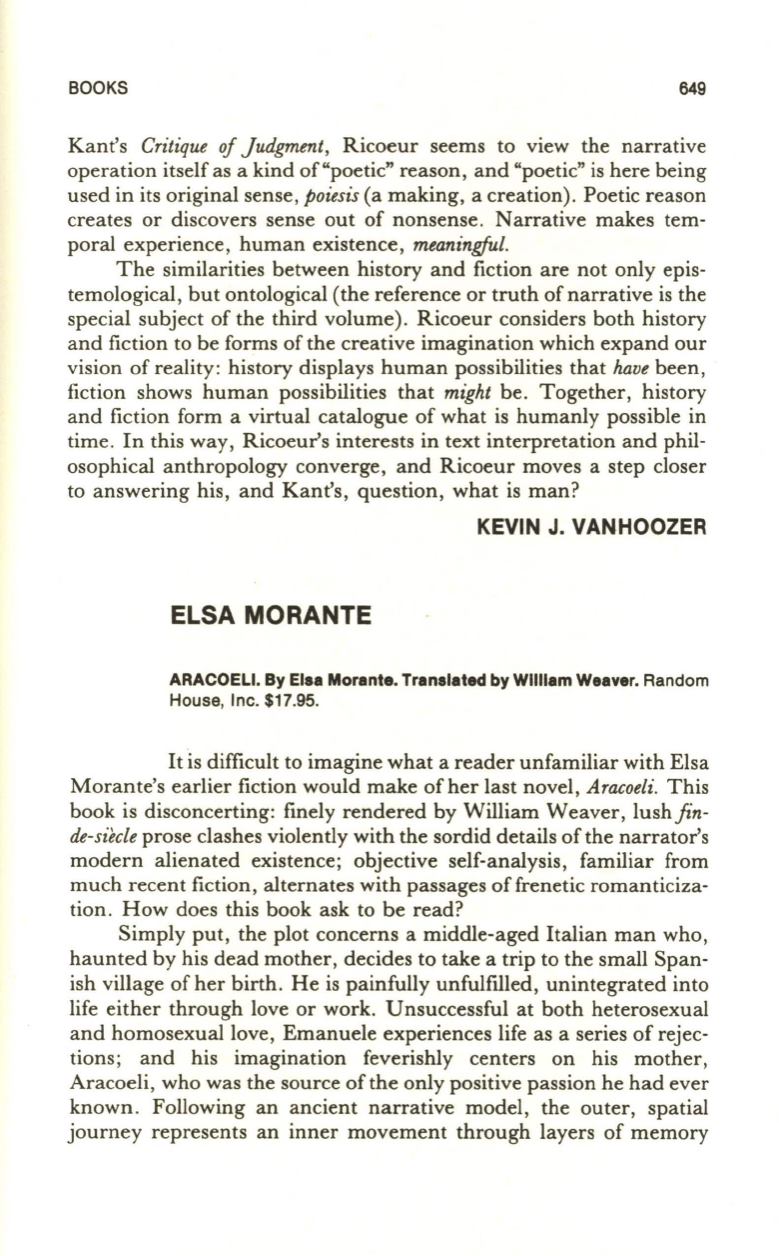
BOOKS
649
Kant's
Critique of Judgment,
Ricoeur seems to view the narrative
operation itself as a kind of "poetic" reason, and "poetic" is here being
used in its original sense,
poiesis
(a making, a creation). Poetic reason
creates or discovers sense out of nonsense. Narrative makes tem–
poral experience, human existence,
meaningful.
The similarities between history and fiction are not only epis–
temological, but ontological (the reference or truth of narrative is the
special subject of the third volume). Ricoeur considers both history
and fiction to be forms of the creative imagination which expand our
vision of reality: history displays human possibilities that
have
been,
fiction shows human possibilities that
might
be. Together, history
and fiction form a virtual catalogue of what is humanly possible in
time. In this way, Ricoeur's interests in text interpretation and phil–
osophical anthropology converge, and Ricoeur moves a step closer
to answering his, and Kant's, question, what is man?
KEVIN
J.
VANHOOZER
ELSA MORANTE
ARACOELI.
By
Elsa Morant•. Translated
by
William W.aver.
Random
House, Inc. $17.95.
It
IS
difficult to imagine what a reader unfamiliar with Elsa
Morante's earlier fiction would make of her last novel ,
Aracoeli.
This
book is disconcerting: finely rendered by William Weaver, lushji·n–
de-siecle
prose clashes violently with the sordid details of the narrator's
modern alienated existence; objective self-analysis, familiar from
much recent fiction, alternates with passages of frenetic romanticiza–
tion. How does this book ask to be read?
Simply put, the plot concerns a middle-aged Italian man who,
haunted by his dead mother, decides to take a trip to the small Span–
ish village of her birth. He is painfully unfulfilled, unintegrated into
life either through love or work. Unsuccessful at both heterosexual
and homosexual love, Emanuele experiences life as a series of rejec–
tions; and his imagination feverishly centers on his mother,
Aracoeli, who was the source of the only positive passion he had ever
known . Following an ancient narrative model, the outer, spatial
journey represents an inner movement through layers of memory


